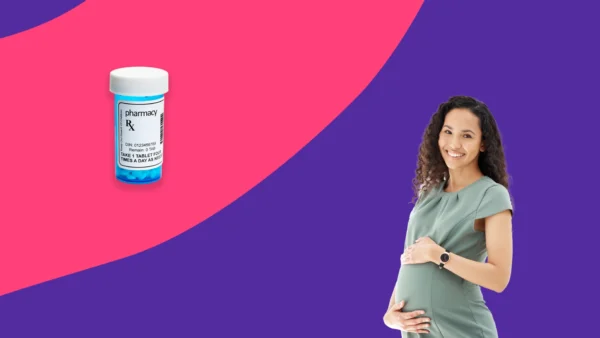Compare Xarelto alternatives | Eliquis | Warfarin | Pradaxa | Plavix | Brilinta | Natural alternatives | How to switch meds
Xarelto is a brand-name prescription drug that contains the active ingredient rivaroxaban. Xarelto is a direct oral anticoagulant (DOAC)—a newer blood thinner—used to treat and prevent blood clots in the legs (deep vein thrombosis or DVT) and lungs (pulmonary embolism or PE). It’s also used to prevent stroke in people with atrial fibrillation (AFib) not caused by a heart valve problem, coronary artery disease (CAD), and peripheral artery disease (PAD). Hospitalized patients, such as those undergoing hip or knee replacement surgery, may also be prescribed Xarelto to reduce the risk of DVT or PE.
Xarelto is one of many anticoagulants available, and there are several reasons why someone may want to switch to a Xarelto alternative. Individuals who experience an allergic reaction, major side effects, or drug interactions while on Xarelto may fare better with a different anticoagulant. Natural blood thinners, including certain foods and supplements, are another option for some people.
What can I take in place of Xarelto?
There are various anticoagulant drugs similar to Xarelto. These medications may have different indications, side effects, and dosages, which are highlighted in the table below.
Compare Xarelto alternatives |
||||
|---|---|---|---|---|
| Drug name | Uses | Side Effects | Dosage | Get Coupon |
| Xarelto (rivaroxaban) | Prevent and treat DVT and PE; prevent stroke in AFib, CAD, and PAD | Back pain, bleeding, stomach pain | 10-20 mg once daily or 2.5 mg twice daily, depending on use | Get Xarelto coupons |
| Arixtra (fondaparinux) | Prevent and treat DVT and PE | Anemia, bleeding, rash | Varies for each patient based on weight | Get Arixtra coupons |
| Aspirin | Prevent heart attack and stroke | Heartburn, nausea, stomach pain | 81 mg once daily | Get aspirin coupons |
| Brilinta (ticagrelor) | Prevent heart attack and stroke in CAD | Dizziness, nausea, nosebleeds | 60-90 mg twice daily | Get Brilinta coupons |
| Eliquis (apixaban) | Prevent and treat DVT and PE; prevent stroke in AFib | Bleeding, bruising, nausea | 2.5-5 mg twice daily | Get Eliquis coupons |
| Fragmin (dalteparin) | Prevent DVT; treat heart attack | Bleeding, bruising, pain at injection site | Varies for each patient based on weight | Get Fragmin coupons |
| Jantoven (warfarin) | Prevent and treat DVT and PE; prevent stroke in AFib and after a heart attack | Bleeding, nausea, vomiting | Varies for each patient | Get Jantoven coupons |
| Lovenox (enoxaparin) | Prevent and treat DVT; treat heart attack | Anemia, diarrhea, nausea | Varies for each patient based on weight | Get Lovenox coupons |
| Plavix (clopidogrel) | Prevent heart attack and stroke in CAD and PAD | Bruising, diarrhea, itching | 75 mg once daily | Get Plavix coupons |
| Pradaxa (dabigatran) | Prevent and treat DVT and PE; prevent stroke in Afib | Bleeding, indigestion, stomach pain | 150 mg twice daily | Get Pradaxa coupons |
Other alternatives to Xarelto
- Angiomax (bivalirudin)
- Argatroban
- Bevyxxa (betrixaban)
- Effient (prasugrel)
- Iprivask (desirudin)
- Savaysa (edoxaban)
- Unfractionated heparin
Top 5 Xarelto alternatives
Any of the blood thinners listed above may be prescribed in place of Xarelto depending on the condition being treated and how much an individual is at risk of forming a blood clot. However, the following medications are the most common alternatives to Xarelto.
1. Eliquis
Eliquis (apixaban) is a direct oral anticoagulant that works in the same way as Xarelto by blocking a protein in the body called factor Xa, thereby reducing blood clotting. This newer drug is one of the most popular anticoagulants available to lower the risk of DVT, PE, and stroke in AFib patients. Like all blood thinners, Eliquis can cause bleeding side effects such as nosebleeds and bruising. An antidote to reverse major bleeding is available for both Eliquis and Xarelto. The standard dosage for Eliquis is 2.5 mg or 5 mg twice daily, depending on the indication.
RELATED: Eliquis vs. Xarelto
2. Warfarin
Warfarin (brand names: Coumadin and Jantoven) is the oldest and one of the most commonly used anticoagulants. Warfarin works by blocking the action of vitamin K to stop the blood clotting process. Xarelto and warfarin are both similarly effective at preventing DVT, PE, and stroke, but warfarin requires additional monitoring to measure how well the drug is working. Individuals taking warfarin must undergo regular blood tests to monitor the international normalized ratio (INR), which represents how quickly the blood clots. Based on the INR value, the dose of warfarin may be changed. There are also many medications and foods that interact with warfarin.
RELATED: Eliquis vs. warfarin
3. Pradaxa
Pradaxa (dabigatran) is another anticoagulant like Xarelto, but it works by blocking a different blood-clotting protein called thrombin. Pradaxa and Xarelto are prescribed for similar reasons, and studies have found these two drugs to be similarly effective in preventing stroke in AFib patients. However, Pradaxa was associated with a lower major bleeding risk compared to Xarelto. Other notable side effects of Pradaxa include stomach pain and heartburn. The standard dosage of Pradaxa is 150 mg twice daily.
4. Plavix
Plavix (clopidogrel) is an antiplatelet drug that prevents platelets from sticking together, thinning the blood and reducing clot formation. Plavix and Xarelto are both used to prevent heart attack and stroke in individuals with heart and vascular diseases. Side effects of Plavix and Xarelto are similar and include increased bleeding, itching, and stomach pain. For the treatment of heart disease, Plavix and Xarelto are usually taken along with aspirin, where Plavix is given at a dosage of 75 mg once daily and Xarelto at 2.5 mg twice daily.
RELATED: Plavix vs. Brilinta
5. Brilinta
Brilinta (ticagrelor) is another antiplatelet medication that is approved by the Food and Drug Administration (FDA) for use in heart disease patients at increased risk of stroke and heart attack. Brilinta and Xarelto both increase the likelihood of bleeding, but Brilinta has an additional side effect of shortness of breath, which occurs in about 14% of people taking the medication. Brilinta is usually prescribed together with aspirin at a dosage of 60 mg or 90 mg once daily.
RELATED: Do Brilinta and caffeine mix?
Natural alternatives to Xarelto
In addition to prescription anticoagulants, there are also certain foods and vitamins that are natural blood thinners. Taking these over-the-counter nutritional supplements along with maintaining a healthy lifestyle may reduce the risk of blood clots and cardiovascular disease. However, it is important to speak with a healthcare provider before trying these remedies, as they may interact with some prescription drugs.
Natural blood thinners include the following foods and supplements:
- Garlic: Garlic has been shown to reduce platelet formation and lower blood pressure. A compound present in garlic called allicin is thought to be responsible for these cardioprotective effects.
- Turmeric: Turmeric is a golden spice that contains curcumin, a substance with natural blood-thinning and anti-inflammatory properties. One study examining the effects of curcumin concluded that daily consumption of turmeric may help maintain anticoagulant effects and healthy blood flow.
- Ginger: Ginger contains high levels of a chemical called salicylate. Salicylate is a natural blood thinner and is also the main component of aspirin.
- Vitamin E: Vitamin E can help prevent blood clot formation by widening blood vessels and blocking platelets from clumping together. Sources of vitamin E include sunflower seeds, almonds, and hazelnuts, as well as dietary supplements.
- Omega-3 fatty acids: High doses of omega-3 fatty acids, found in fish oil, can have anti-clotting effects. Omega-3 fatty acid supplements are available in both over-the-counter and prescription forms.
Natural alternatives are not as effective as anticoagulant drugs and should not be used in place of prescription medications, especially for high-risk patients. When taken in conjunction with other blood thinners, these natural remedies may increase the risk of bleeding, and their use should be monitored by a healthcare professional.
How to switch to a Xarelto alternative
Switching from Xarelto to an alternative medication may be necessary for some people. Individuals that want to switch to a different anticoagulant should discuss their decision with a healthcare provider and take the following steps:
1. Do not stop taking Xarelto
Suddenly stopping Xarelto can increase the risk of having a stroke, DVT, or PE. Xarelto should not be stopped unless under the medical advice of a cardiologist or other doctor.
2. Keep a journal of symptoms
Keep a record of any new or ongoing symptoms of your condition, including their frequency and intensity. A healthcare provider can evaluate this symptom journal to see how well Xarelto is working and if any changes should be made.
3. Tell the doctor about medication side effects
Let your doctor know about any Xarelto side effects that are bothersome or affect your quality of life. Get medical attention at any sign of serious side effects, which can be life-threatening, such as:
- Unexpected or unusual bleeding
- Bleeding that is severe or unable to be controlled
- Red, pink, or brown urine
- Red or black stools
- Coughing up blood or blood clots
- Vomiting blood or vomit that looks like coffee grounds
- Headaches, dizziness, or weakness
RELATED: What are the side effects of Xarelto on the elderly?
4. Tell the doctor about all medications and supplements being taken
Some drugs, herbal remedies, foods, and drinks (like alcohol) can increase the risk of bleeding when taken at the same time as anticoagulants. Talk to your doctor about all the medicines and supplements you’re taking before switching to a Xarelto alternative in order to avoid drug interactions.











